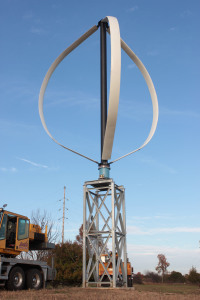I have spent much of the last years trying to understand why it is that academics fail to understand the nature of the global temperature signal, whereas most engineers and those of a pragmatic nature who have studied the subject find themselves … let’s just say sceptical of the academic viewpoint.
In the past I’ve tried to explain this difference through a mechanistic approach: that academics do not encounter the same real world problems with the same real world knowledge, so when presented with a real world problem with real world noise & “natural variation”, they have no relevant skills or experience to draw on and so fail to recognise the true complexity of the situation. But I’m beginning to suspect a psychosurgical deficiency in the way academia behaves which is akin to autism.
Last night after watching a film on AI, I was discussing possible alternative strategies for developing AI with my wife in which I asserted that perhaps the biggest block to AI, was that academic researchers are trying to mimic their own “intelligence”. In other words, they may be basing their views on the false premise that what they perceive as “themselves” is “intelligent”. And the reason they cannot see beyond the idea of an “intelligent self” – is that they are falsely arrogant of their own abilities. (Without going into details, it would be like a kid using a calculator. Is the kid with the calculator “intelligent” – just because they come up with the right answers. Therefore is the academic who merely draws from the accumulated knowledge to answer a question really “intelligent”?)
Then afterwards I started researching Maasai group marriage traditions, and reading the academic papers I found the same kinds of “holier than thou” attitude in which those papers were trying to explain why the Maasai were not monogamous “like us”. I was just trying to understand – without allowing my own prejudices to get in the way – why group-marriage was the preferred system of the Maasai. But the academics appeared to want to explain why the Maasai “weren’t like us”.
My question: “what do the Maasai themselves think about group marriage versus monogamy”
Academic question: “why do the Maasai practice group marriage (with the implication they should be monogamous)”?
And, I am finding this more and more: academics are not asking the questions that I want to have answered. They simply either are not interested, or perhaps more accurately, do not understand the types of questions I ask. What is going on here?
The nature of the “Autistic” individual
In the film last night, we were shown two characters and were led to believe that one was a machine and the other “autistic” individual supposedly was a machine. However, by the end of the film, we found out that it was the reverse. That the machine had been the highly articulate individual the journalist fell in love with, and the “thing” which the journalist had so despised when they made amorous advances, was the human.
However, since the “loving” human was created by the “Autistic”, how would an autistic individual have known how to create a fully empathetic human?
(Note there was no reason to believe the individual was clinically autistic – it was just a label used for a person whose identity and personally were in question in the film)
Perhaps the “Autistic”, individual was perfectly capable of understanding how other humans should react with other humans (or pseudo humans in the machine) – so long as they were viewing them dispassionately as an outsider. In a situation where those they saw were equals as an observer, they could understand how others should behave to be seen as normal.
This implied that (for the individual in the film) their problem came whenever they tried to understand their own interaction with other humans and how these were being perceived: they failed to see themselves as outsiders would see them. As such their problem was trying to discern how an unequal relationship from the view of the body their consciousness inhabits is perceived by third parties.
Or to us an anology: trying to understand a road accident is easier if you are not one of the vehicles involves because as a bystander you can see how they both behave. Whereas as an occupant of one car, you see the accident from inside a vehicle. Thus your main field of view is your own car, then the road, then the other vehicle is a very small part of your view. But you cannot for example see whether your own lights were working – but someone outside can.
Thus in the film, it was not a failure to understand humanity in itself which made them appear autistic – but instead it was failure to understand how to view themselves in a dispassionate way. In a way so they they saw themselves as a third party would view them. To be aware of how they were seen by others or at least to “act” in a manner that gave the impression to others that they were aware how they were being perceived. Thus not actually being empathetic – but instead learning how to act in a manner that gave the appearance of being “socially acceptable”.
The Hypothesis of the Autistic Academic
Thus, I would like to suggest that perhaps academia shares some of the problems of the autistic individual. They may be very capable of understanding the world around them in many regards, but in some key essentials, they lack the ability to see themselves as others see them. This in itself is not usually an issue, but it does mean that academia would be largely incapable of assessing its own performance and failings. I’d also like to suggest that academics whilst excellent in many areas, are devoid of understanding in many others.
The Hypothesis of the Arrogant Autistic Academic
Then, if we add onto a failure to really understand themselves, a massive arrogance created by a group culture of “elitism” – we have the quintessential “mad scientist” – or at least, a group that lacks self-understanding but which has a massive superiority complex.
Areas of Concern
Whilst I suspect that “academic autism” is acquired by learning rather than is the nature of the beast, I have repeatedly seen areas where academia acts in what appears to me to be a very autistic way.
Windmill/wind-turbine development
 The first area where I came across a complete failure of academia to be able to develop successful machines is in the area of “windmills” (as successful countries call them) or “Windturbines” (as unsuccessful countries call them). The problem was that when academics became involved, they saw the solution as being one of “hi-tech” design. Therefore the concentrated on the most “physicsy” bit of the design which was the aerodynamic profile of the blades. As a result, Britain created some of the best wind”turbine” blades, but completely failed to develop any industry.
The first area where I came across a complete failure of academia to be able to develop successful machines is in the area of “windmills” (as successful countries call them) or “Windturbines” (as unsuccessful countries call them). The problem was that when academics became involved, they saw the solution as being one of “hi-tech” design. Therefore the concentrated on the most “physicsy” bit of the design which was the aerodynamic profile of the blades. As a result, Britain created some of the best wind”turbine” blades, but completely failed to develop any industry.
The reason for this was because the critical technology was not the blade – instead it was the brakes and bearings. And because breaks and bearing were “tried and tested technology”, no academic ever considered them worthy of research and it was always “somebody else’s job” to make them work. So, the culture of research in the UK and US caused us to ignore the critical functionality that was key to the success of windmill development. But it was not just a lack of interest. It was a total inability to perceive the real nature of the challenge. They couldn’t comprehend there was any alternative approach – even after the alternative approach in Denmark proved so successful. (As proof of this, look at how the UK academics view Risø which was a test facility – which UK academics describe as a “research facility).
The other key thing to note, is that academics are as a class very enthusiastic about the idea of wind power. Not as a practical device but as a theoretical “nice to have”. And as such they often dream up “nice to have” ideas for devices. So that when I went to University – they had a wind turbine outside (similar to that above). And for the first few years I was never quite sure whether it was a sculpture or an actual device. Finally, I met the researcher who had undertaken the project to learn it had been a real research project – but there had been mechanical problems and the grant money ran out – so now it was just a sculpture.
Academics just love “hi-tech”.
Space flight
 As a boy I watched the landing on the moon – and even remember the huge concern about error code as they landed. And like many I had a scrap book filled with all the “hi-tech” images of space, and I watched all the “hi-tech” images of star trek, star wars (all assisted by Nasa to promote their “hi-tech” programs – just as they assisted eco-activists to promote their environmental programs).
As a boy I watched the landing on the moon – and even remember the huge concern about error code as they landed. And like many I had a scrap book filled with all the “hi-tech” images of space, and I watched all the “hi-tech” images of star trek, star wars (all assisted by Nasa to promote their “hi-tech” programs – just as they assisted eco-activists to promote their environmental programs).
And like “renewable” energy windturbines – academics just loved the idea of a “reusable” space ship (so green burning all the fossil fuel to get to space!). So we had to have the recyclable orbital vehicles (like challenger). And because these were built to be “reusable” they were built to be both a spacecraft and a plane, and as a result they were far more complex than a simple rocket and far heavier, burnt far more fossil fuel and so far more expensive to put into space.
In contrast, the USSR – well where NASA spent billions developing a pen to work in zero gravity, the USSR used a pencil. Where NASA developed a high tech re-usable vehicle – the Russians had a “low-tech” rocket.
In the end, like the UK/US “windturbines”, the complex costly “hi-tech” “recyclable” vehicles of the US were scraped and they ended up using the “lo-tech” Russian rockets.
Fusion Reactor
 Ever since I was a child, academics have been talking about fusion reactors in almost the same way as they talked about wind power. And in very much the same way, we’ve seen project after project in which almost nothing is actually achieved, except we get very “hi-tech” pictures.
Ever since I was a child, academics have been talking about fusion reactors in almost the same way as they talked about wind power. And in very much the same way, we’ve seen project after project in which almost nothing is actually achieved, except we get very “hi-tech” pictures.
And every time we hear that “it nearly worked” … except for a few teething problems.
Then a few years ago we started hearing about “cold fusion”. And in very much the same way climate academic viciously attacked sceptical academics – those suggesting it was possible to produce cold fusion without a massive investment in big fancy technology were totally dismissed. And like climate change – Wikipedia had a massive fight over the issue. And like Climate, I believed the academic viewpoint on the subject, until I heard that cold fusion is already being used. That’s right – for a few thousands you can already by a fusion reactor!
 There is already a practical type of “cold fusion” or at least “small fusion”.
There is already a practical type of “cold fusion” or at least “small fusion”.
World’s smallest neutron generator – it’s not just for nukes anymore
So yet again, we already have what appears to be very simple technology that uses nuclear fusion, yet somehow the solution YET AGAIN is a very expensive and high tech piece of equipment that looks like the inset of a film set for star wars.
Hi-tech versus simple?
Artificial Intelligence
Ever since I was a boy, academics have been talking about artificial intelligence in almost the same way as they talked about windturbines, space exploration, fusion reactors … I think you get the picture by now. Without looking at the research being done, I can already guess it sees the solution as Hi-tech Complex technology. And almost certainly the breakthrough will not come from academia, but instead will be some dumb engineer who has a problem to solve (like the original BT computer).
Is “science” teaching people to think in a way akin to what might be called “scientific autism”?
I am beginning to question whether the whole philosophy of science (as it is now taught) may encourage and even compel individuals to think in a way that constrains their thinking so that they are literally incapable of understanding science (such as in the case of climate).
In contrast, by becoming free from the constraints and social pressures of “science”, those outside academia may end up being far better “scientists” than those inside. As such we may be wasting out time pouring $billions into academia!
Consider the well known saying:
If the only tool you have is a spanner, then every problem looks like a nut
Now consider the terminology: “tool”, “spanner”, “problem”, “nut”. These are all concepts used in engineering. It is therefore part of the philosophy of engineering. And engineering is part and parcel of everything we have from consumer goods, to space shuttles to neutron generators. And now google “the philosophy of engineering” – almost nothing.
It is as if engineering is the Cinderella – kept from going to the ball, because the ugly sisters of academia (and the media) collude together to keep Cinderella in rags.
Engineering has a focus is on “problem solving” … the philosophical considerations when deciding what tools, techniques and skills are needed to approach a problem. The above quote is a warning … not to arm yourself with just a spanner …. when real world problems need lots of different tools and a willingness to try different approaches when the first (and second, etc.) fail.
And what has struck me many times writing about climate science, is that the “intelligent” criticisms I use often involve explicit engineering terminology. Even insults are engineering. People are “nuts”, “spanner”, they have a screw loose. It is as if the tools and techniques I learnt as an engineer force me to criticise the bad engineering of the climate academics.
But we are ignored. This is not because engineers are less well qualified than “scientists” – quite the reverse! Most engineers are perfectly capable of understanding science – it’s part of the job because engineering is based on science. But it is not the whole job. Likewise, when engineers approach a problem they are taught to approach it in a “whole-istic” way, to avoid having only “one tool” and therefore “only one solution”.
In contrast, “scientists” are taught to approach problems in a mechanistic way: to apply a formulaic approach that is supposedly “guaranteed” to produce the right answer. They are as a consequent, arrogant that this ONE-SPANNER approach “must be right”; arrogant that the answer they find “must be right”, and totally dismissive of others with far more experience and a wider set of skills and tools by which to view a problem, who question the validity of their conclusions.
Conclusion
Academia is suffering from something that seems to me to be akin to autism. It is unable to perceive its own failings, unable to empathise with equivalent expertise outside, and is dogmatically following a formulaic approach which although sometimes startlingly successful at other times a repeating failure.


Any difference between ‘dogmatically following a formulaic approach’ and ‘groupthink’?
Yes. Groupthink is the behavior of mindset that justifies using a dogmatic formulaic approach – or a “one club” approach.
To expand a bit: Engineers all use the scientific method – but instead of thinking it will magically come up with an answer – engineers realise that the reality of poor data and poor understanding of the system means that the scientific method can not be relied on. Instead a range of other pieces of “soft” information have to be assessed in addition to any scientific data. It’s literally “whole-istic” whereas science is a bit like a sledgehammer – great if you’re cracking nuts – great if the nut happens to be on something hard that can be hit by a sledge – in fact who am I kidding? It’s only great in a very narrow set of circumstances (Whenever I’ve tried it the nut comes out as mush.)